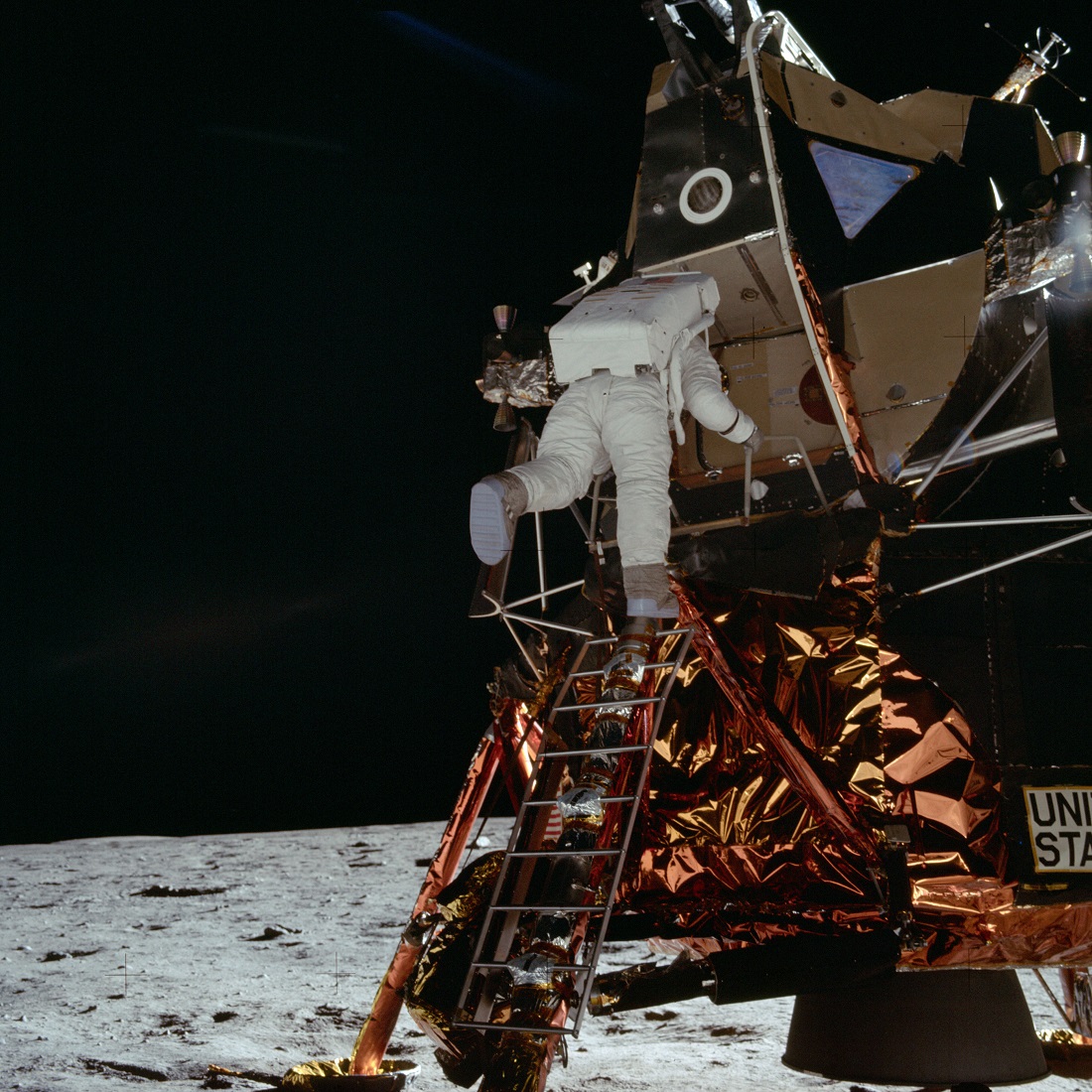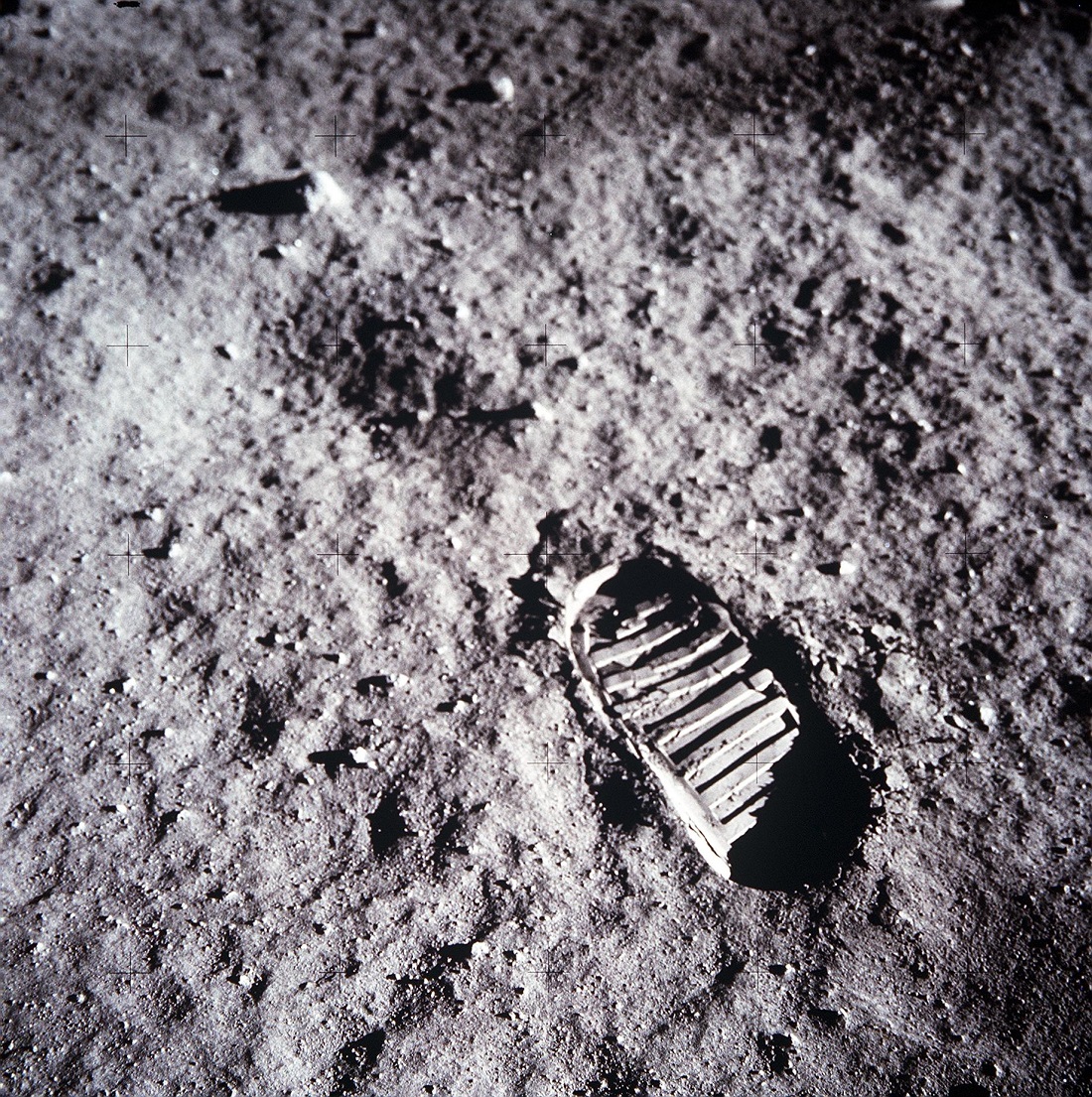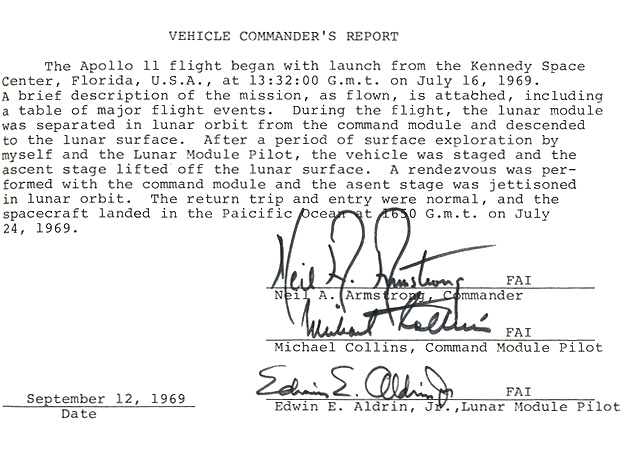Apollo 11 “The Eagle has landed”
Image: Astronaut Buzz Aldrin walks on the surface of the moon near the lunar module Eagle. Mission Commander Neil Armstrong took this photograph with a 70mm lunar surface camera.
On July 20th 1969, Armstrong and Aldrin made their final descent to the moon’s surface and became the first humans on the moon.
Dressed in meticulously-designed space suits containing oxygen, temperature control systems and communications equipment, the two astronauts entered the Eagle – the Lunar Module – leaving Michael Collins at the control deck of Columbia, the Command Module. They prepared for descent to the moon’s surface.
Descent to the moon
At 100 hours and 12 minutes into the flight, the Eagle undocked from Columbia and went into lunar orbit. On the 13th orbit, the Eagle changed orbit to that adopted by Apollo 10 a few weeks earlier: 9 by 67 miles. At 102 hours and 33 minutes into the mission, powered descent commenced until the Eagle was positioned 26,000 feet above the surface and five miles from the landing site – the Sea of Tranquility, site 2. Less than a minute's worth of fuel remained.
Armstrong radioed:
"Houston, Tranquillity Base here. The Eagle has landed."
The relief between the astronauts on the moon, and mission control back on Earth must have been immense.
Charlie Duke in mission control replied:
“Roger Tranquility, we copy you on the ground. You got a bunch of guys about to turn blue. We're breathing again. Thanks a lot.”

Buzz Aldrin descends the ladder of the Lunar Module "Eagle"
First footsteps
109 hours and 42 minutes after launch, as the Eagle cast a strange shadow onto the moon’s surface, untouched by humans since its creation, Armstrong cautiously descended the ladder and made the very first footprint in the dust.
His words “It's one small step for man, one giant leap for mankind” have become immortal, as has the footage that the two astronauts transmitted back to Earth.
Aldrin followed down the ladder 20 minutes later, commenting on the “magnificent desolation” of the landscape at his feet. The pair positioned the camera on a tripod to record their actions.
The world held its breath and watched.

A close-up view of astronaut Buzz Aldrin's bootprint in the lunar soil, photographed with the 70mm lunar surface camera.
A call from the President
Whilst the two astronauts were standing on the moon, the longest long-distance phone call ever was made. President Nixon in the White House called to say: "As you talk from the Sea of Tranquillity, it inspires us to double our efforts to faring peace and tranquillity to earth. For one priceless moment in the whole history of man, all the people on this earth are truly one."
The two astronauts proceeded to undertake their specific scientific tasks.
FAI records
Amongst the team working on the Apollo project, the acronym “EVA” stood for Extravehicular Activity: “walking on the moon”. Apollo 11 set a total of five records during themission, all ratified by the FAI.

Vehicle Commander's Report from FAI archives
OFFICIAL FAI RECORDS FOR APOLLO 11
- Extravehicular duration in space: 2h 31min 40sec
- Extravehicular duration on the surface of the celestial body by an astronaut: 2h 31min 40sec
- Duration of stay in orbit around a celestial body: 59h 27min 50sec
- Duration of stay on the surface of the celestial body: 21h 36min 21 sec
- Greatest mass landed on the celestial body: 7 326.9kg
Further information
Image credits: NASA

